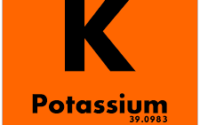Bullet Train Service (Shinkansen Service)
A bullet train service is a rail train facility employing high speed passenger trains. The first bullet train service was commissioned in japan in late 1964. The bullet train earned the name from the aerodynamic shape and the speed of travel. The train service is known as Shinkansen in Japanese language which means ‘new trunk lines’.
Why did Japan adopt bullet train (Shinkansen) service?
Japan is an island nation with high density of population. Japan is an archipelago (group of islands) of 6852 islands. Hence the extent of land and usable space that can be spared for road construction is limited. This has made the people to depend largely on public transportation in their daily lives. High speed bullet train service was adopted to ensure faster connectivity between large cities scattered in various islands, reduce land utilization and extract optimum usage of land used for train infrastructure.
How do the bullet trains achieve high speed?
The sleek aerodynamic design and adoption of latest technology enable the bullet trains to achieve maximum speed. In test runs, the trains have crossed 443km/h, but the operating speed is in the range of 320 km/h (200 mph). The Shinkansen tracks are special tracks designed for bullet trains alone. There are only limited numbers of stations. The train tracks are designed avoiding railroad crossings, twists, turns and travels through hills or mountains. Tunnels and overpasses are employed to overcome obstacles. Normal trains do not run on the Shinkansen tracks and hence bullet trains can run at high speed without botheration of slower trains.
What is the history of Shinkansen bullet trains?
Initial Shinkansen service linked the two cities Tokyo and Osaka at a distance of 320 miles. The service was commissioned in late 1964. It was the culminations of discussions that started in the 1930s. The initial trains travelled at around 125 mph, thus covering the distance within three hours. Presently, the distance is being covered in two and a half hours. There are eight lines of service in the network that interconnects major cities of Japan.
Whether Bullet trains are used in other nations?
The massive success of bullet train service in Japan prompted many other nations to have their own train network. Many European and Asian nations are utilizing the service for mass transportation. France and Spain are successfully maintaining their high speed train service network. The French Train a Grande Vitesse (TGV) line that was initially commissioned in 1981 connecting Paris and Lyon now passes through neighboring nations Germany, Luxembourg and Switzerland.
Spain started its bullet train service in 1992. It is named the Alta Velocidad Espanola (AVE). It now connects the north and south of the country. China, Portugal, Italy, United Kingdom, Germany, South Korea and Taiwan are some other countries that have established high speed train service networks.
What is the bullet train programme of India?
India has launched its bullet train programme to be completed by 2022 connecting Mumbai and Ahmedabad. The work was launched by the prime ministers of India and Japan on September 14, 2017. The distance of 508 km between the two cities is estimated to be covered in around three hours by bullet trains travelling at approximately 350 km/h. The bullet train programme in India is proposed to be completed with the assistance of Japan.









